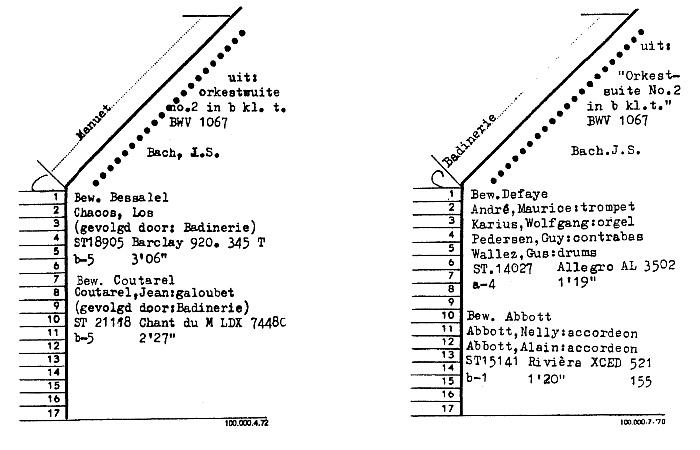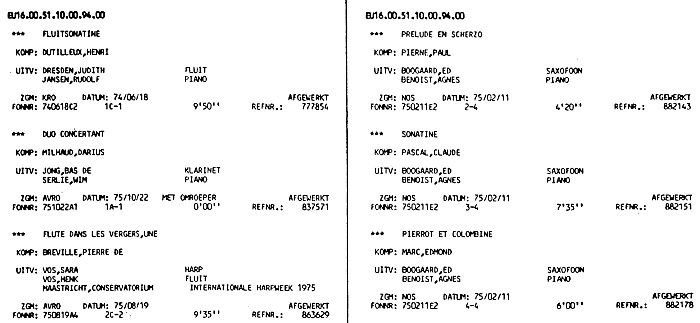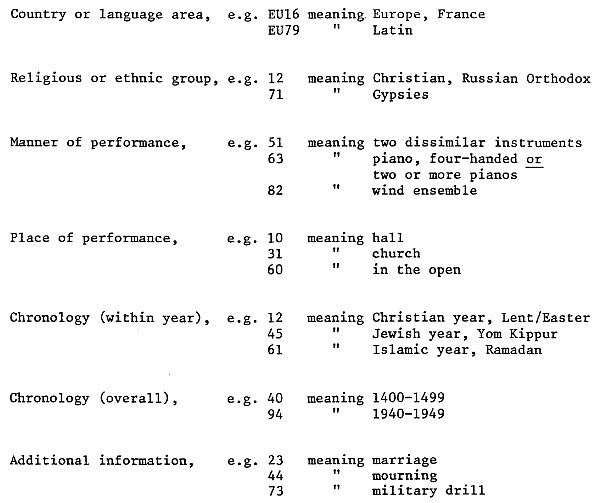Collection of commercial recordings in a broadcasting archive
Case Study: Nederlandse Omroep Stichting, Hilversum, The Netherlands
(a) Collection
In a large and rapidly growing collection, a total size is difficult to estimate. In January 1981, the collection included over 200,000 discs (about 85,500 hours, 95% music) and about 180,000 tapes (about 76,000 hours, 80% music). The main archival concern is with recordings made by NOS itself. In addition to music,
the archive has oral history, folklore and sound effects collections.
(b) Cataloguing Staff
In the commercial record department, seven of a staff of twenty employees are occupied with cataloguing tasks. The tape archive has six and the oral history department has five 'reviewers' (see gi).
(c) Catalogue
An on-premises computer-output microfiche system is in use, supplementing and increasingly replacing a card catalogue. No publications have been printed as the archive has no public role.
(d) Catalogue System
Since 1975 SYFON (SYsteem FONotheek), a computerised system, has been replacing the previous card-based catalogue. Information is stored in a format devised by NOS staff. Of particular interest is the development of an alpha-numerical classification system HOUDINI providing information on genre, period, national or linguistic origin, function etc. (see gii).
(e) Indexes
Indexes are maintained for title, composer, performer, keyword, classification and (for NOS recordings) radio licensee and date. Most indexes give full information for each recording cited.
(f) Examples
i. Figure 6 shows two cards from the superseded manual catalogue, both refer to the same principal work ('Orkestsuite No.2') but provide details of different recordings of different extracts ('Badinerie' and Menuet') from that work. Note also that two recordings are listed on each card to conserve space.
ii. Figure 7 shows representative SYFON entries which are arranged by HOUDINI classification strings (see gii).

Figure 6

Figure 7
(g) Comments
i. The documentation staff complement in the tape archive is considered large and will be reduced when work is completed on the backlog of poorly documented material. The number of 'reviewers' of oral history, on the other hand, is considered low and will be increased if possible.
ii. HOUDINI would function best in circumstances where on-line interrogation of the catalogue was possible, but produces a useful classification/index for users even in off-line usage. HOUDINI classification 'strings' are made up of seven elements as follows:

The appearance of these strings may be seen at the top of figure 7; the strings may be decoded from the information just given. 00 is entered to indicate a 'null' entry for a given topic.


